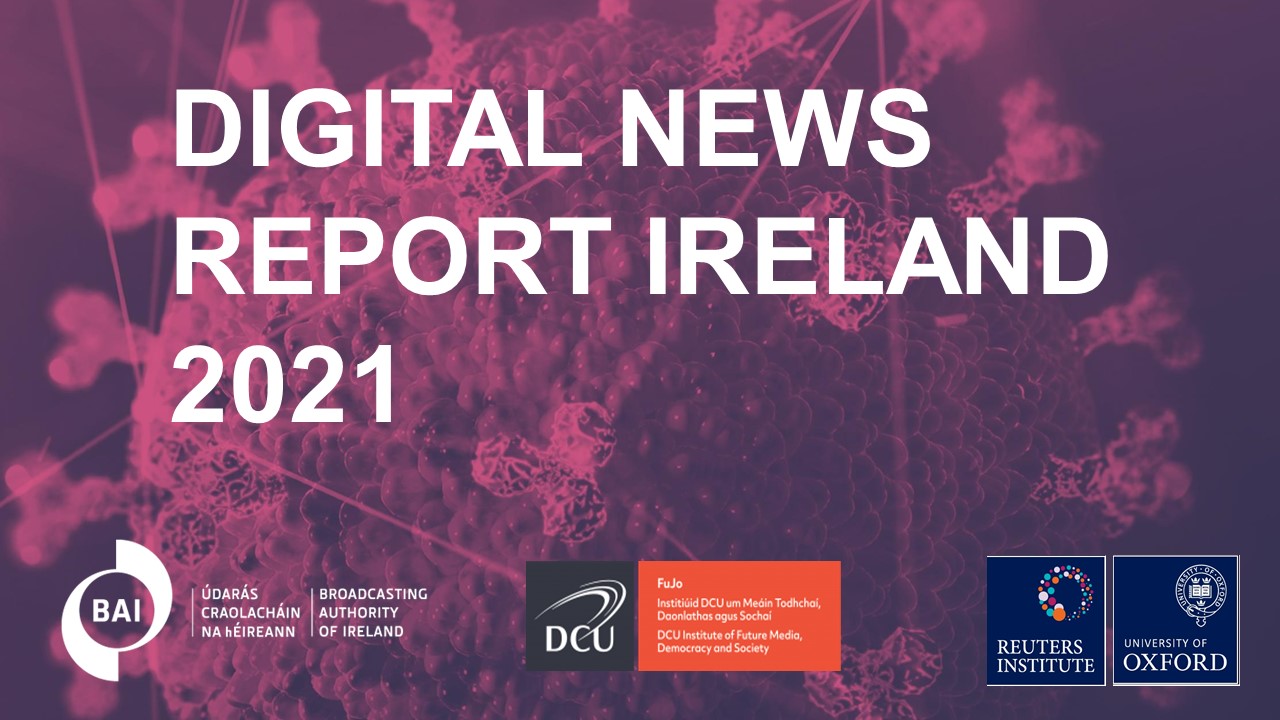
Covid-19, fake news and TV’s revival: Inside this year’s Reuters Digital News Report
Published last month, the new Reuters Digital News Report, funded by the BAI, has highlighted some of the changes in how Irish audiences consume and interact with media. The Reuters Institute Digital News Report is the most extensive ongoing comparative study of news consumption globally, with the Irish data forming part of the larger survey. Conducted in 46 countries, Ireland’s participation has been facilitated for the seventh year through sponsorship by the Broadcasting Authority of Ireland (BAI).
This year’s report profiles Irish media consumers, their interests and engagement with news and technology; their sources and devices; their attitudes towards trust, disinformation and paying for news; new data on brands, discovery and social media and the effect of COVID-19 on news media consumption in Ireland.
Key findings of the report include:
- 70% of Irish respondents said they were extremely or very interested in news.
- The number of consumers who cite television as their primary source of news in Ireland has risen to 41%. Next is online at 29% and social media at 16%. Radio has fallen to 9%, and printed newspapers has fallen to 4%. There has been an increase across all age groups citing TV as their primary news source, with the 18-24-year-old-age group recording the largest increase up 13 percentage points on 2020, to 28%).
- Levels of public trust in news in Ireland have increased, with 53% of respondents expressing positive levels of trust in the news media
- More than half of respondents in every age category from 35+ believe that news outlets should try to be neutral on every issue, while slightly less than half held this view in the 18 – 24 (46%) and 25 – 34 (49%) age categories.
- The number of consumers paying for news subscriptions or access increased by 4 percentage points to 16%. There has been an increase across all age groups, subscribing, donating, or paying to view content.
- Some 37% said they were very or quite concerned about the financial state of commercial news organisations in Ireland. 34% said they believe news organisations are either more profitable than or roughly as profitable as they were 10 years ago. 29% said they were unaware of the financial difficulties faced by the media. 32% were in favour of the Government providing assistance to struggling news organisations.
- 60% of consumers access online news through smartphones, followed by laptop or desktop computers at 27% and tablets at 11%.
- Respondents were generally skeptical of news they see on social media, with 51% disagreeing or strongly disagreeing with the statement ‘you can trust the news on social media most of the time’. 75% of those in the 65+ age group said they were ‘concerned about what is real and what is fake on the internet’, compared with 55% of 18-24-year-olds.
- COVID-19 topped the bill for false or misleading information seen in the last week (49%), followed by politics (28%), celebrities (25%) and climate change or the environment (19%). For younger cohorts (18-34-year-olds), ordinary people were cited as the most concerning sources for false or misleading COVID-19 information; activists or activist groups were cited in this category for 55+ age groups. Facebook was the main platform that caused most concern regarding COVID-19-related false or misleading information (38%).
- In terms of COVID-19 information sources, 42% of respondents said they got their information from national health organisations; 40% cited news organisations, 38% cited scientists, doctors or other health experts, and 36% cited the national government.
- When asked about how their age group is represented, the 45-54 age group was most content; conversely, young adults aged 18-24 were most unhappy, with 34% saying there was not enough coverage. Of that same young adult category, 47% felt unfairly covered in news media, almost 20 percentage points higher than the next age category (28% among 25-34-year-olds). Regarding perceptions of fairness of coverage for “people of your social and economic class,” among those on low incomes, only 48% felt their social and economic class is fairly represented, compared with 69% of high-earners. Meanwhile, 67% of those on higher incomes believe they receive adequate levels of coverage, while only 52% of those on low incomes felt the same.
Diversity, particularly gender representation in the media is a key area of focus for the BAI. This year, in addition to the Digital News Report, the BAI has commissioned DCU to examine, in more detail, gender and diversity in the context of the Irish Reuters data since 2016. In particular, the BAI is interested in understanding women’s attitudes towards and engagement with news.
The Reuters Digital News Report Ireland 2021, is available on the BAI website, www.bai.ie, along with an infographic illustrating some key findings of the report.
